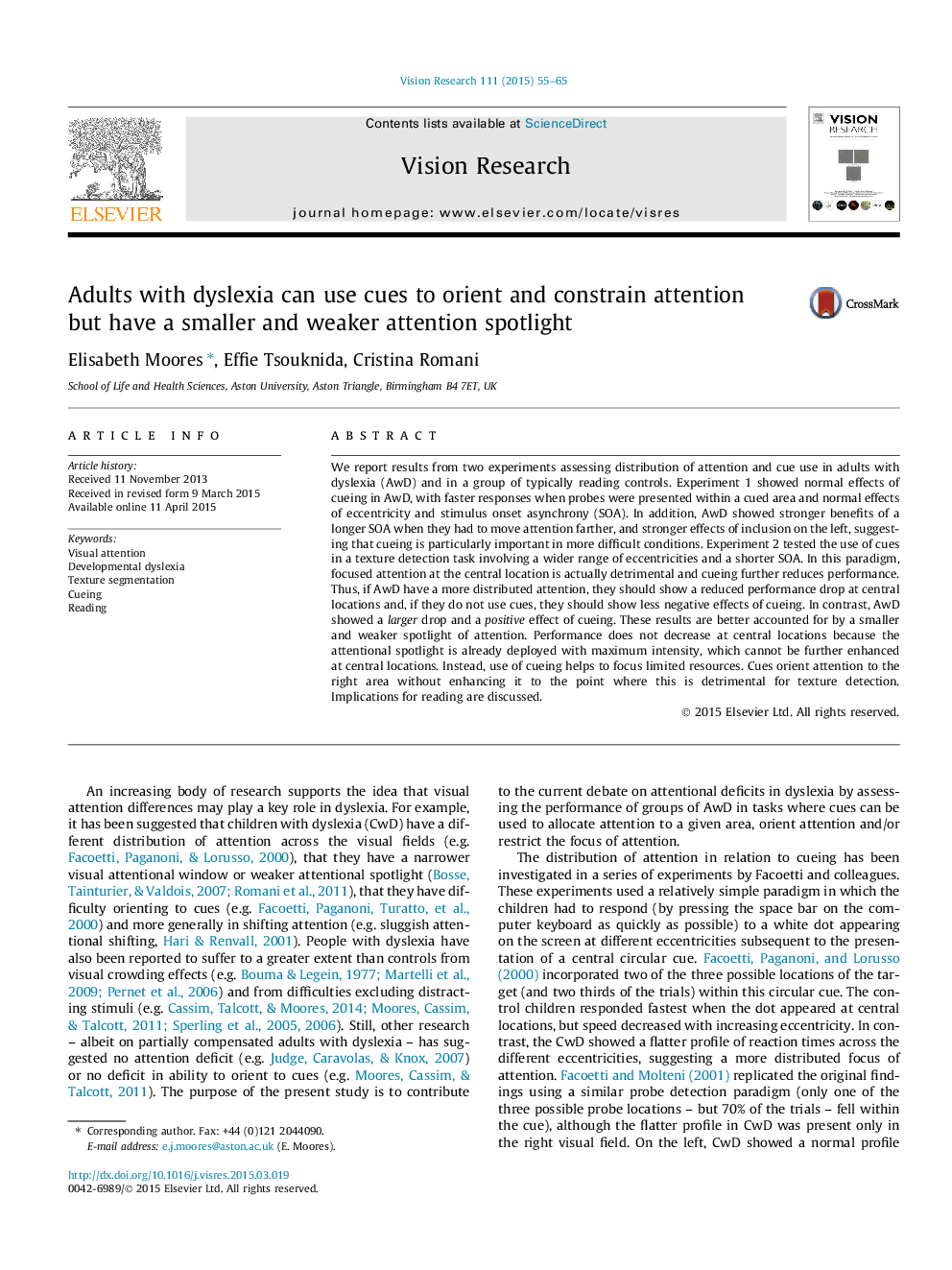| کد مقاله | کد نشریه | سال انتشار | مقاله انگلیسی | نسخه تمام متن |
|---|---|---|---|---|
| 4033565 | 1263356 | 2015 | 11 صفحه PDF | دانلود رایگان |
• Adults with dyslexia use cues to constrain attention in a probe detection task.
• Adults with dyslexia show rapid orientation to cues in a texture segmentation task.
• No evidence for more diffuse attention in adults with dyslexia.
• Evidence for smaller attention spotlight in adults with dyslexia.
We report results from two experiments assessing distribution of attention and cue use in adults with dyslexia (AwD) and in a group of typically reading controls. Experiment 1 showed normal effects of cueing in AwD, with faster responses when probes were presented within a cued area and normal effects of eccentricity and stimulus onset asynchrony (SOA). In addition, AwD showed stronger benefits of a longer SOA when they had to move attention farther, and stronger effects of inclusion on the left, suggesting that cueing is particularly important in more difficult conditions. Experiment 2 tested the use of cues in a texture detection task involving a wider range of eccentricities and a shorter SOA. In this paradigm, focused attention at the central location is actually detrimental and cueing further reduces performance. Thus, if AwD have a more distributed attention, they should show a reduced performance drop at central locations and, if they do not use cues, they should show less negative effects of cueing. In contrast, AwD showed a larger drop and a positive effect of cueing. These results are better accounted for by a smaller and weaker spotlight of attention. Performance does not decrease at central locations because the attentional spotlight is already deployed with maximum intensity, which cannot be further enhanced at central locations. Instead, use of cueing helps to focus limited resources. Cues orient attention to the right area without enhancing it to the point where this is detrimental for texture detection. Implications for reading are discussed.
Journal: Vision Research - Volume 111, Part A, June 2015, Pages 55–65
